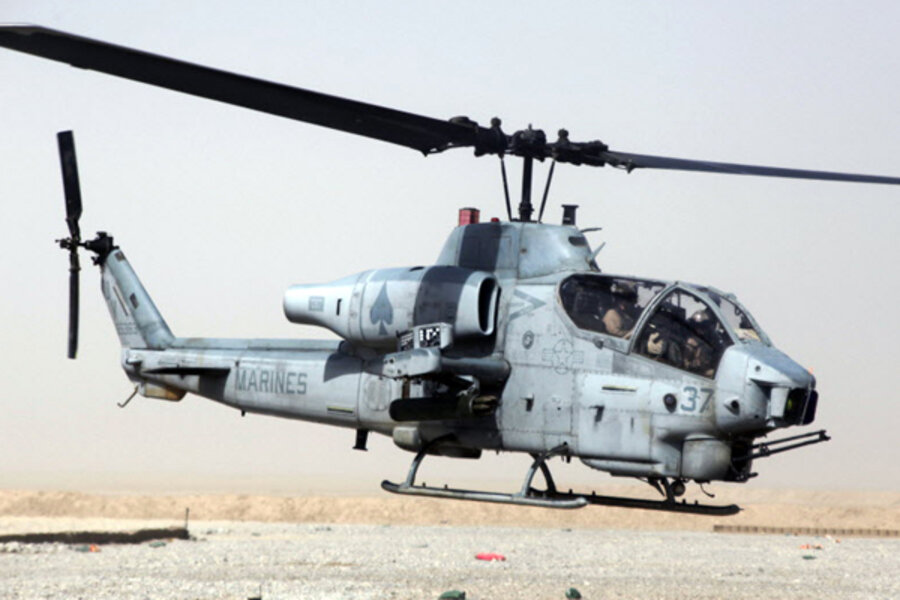Helicopter mid-air crash kills 7 Marines in Calif. desert
Loading...
| SAN DIEGO
Two military helicopters collided over the California desert during nighttime training exercises, killing seven Marines in the latest of several similar accidents in the region.
The service members with the 3rd Marine Aircraft Wing were based at Camp Pendleton north of San Diego, Lt. Maureen Dooley with Miramar Air Base in California said Thursday. The crash happened around 8 p.m. Wednesday and involved an AH-1W Cobra that carries two crew members and a UH-1 Huey utility helicoptercarrying the other five.
The aircraft collided in a remote portion of the Yuma Training Range Complex on the California side of the Chocolate Mountains very close to the Arizona border, Dooley said. The exact location hasn't been confirmed.
"We're still gathering a lot of details as the sun comes up," she said.
It will be at least 24 hours before the Marine Corps releases the names of those killed, Dooley said.
The desert area is favored by the U.S. military and its allies for training because the hot, dusty conditions and craggy mountains replicate Afghanistan's harsh environment and the clear weather allows for constant flying.
Cpl. Steven Posy with Marine Corps Air Station Miramar said Thursday the weather "was pretty mild last night."
Several accidents have happened in the past year involving Marine training in Southern California.
In September, a helicopter went down during a training exercise at Camp Pendleton, killing the two Marines onboard and setting off a fast-moving brush fire at Camp Pendleton.
In August, two Marines were ejected from their F/A-18 Hornet fighter jet as it plunged toward the Pacific Ocean. The two Marines spent four hours in the dark, chilly ocean before they were rescued. Both suffered broken bones but survived.
In July, a decorated Marine from western New York was killed during a training exercise when his UH-1Yhelicopter went down in a remote section of Camp Pendleton.
Another Hornet sustained at least $1 million damage when its engine caught fire on March 30 aboard the USS John C. Stennis during a training exercise about 100 miles off the San Diego coast. Eight sailors, a Marine and two civilians were injured.
A decade ago, in February 2002, a helicopter crash in the Chocolate Mountains California killed two Camp Pendleton Marines and injured two others. The UH-1N Huey was on a routine training mission in the Naval gunnery range.
The AH-1W carries a crew of two, a pilot and gunner, and is considered the Marine Corps' main attackhelicopter. The UH-1Y, which is replacing the aging version of the Huey utility helicopter first used during the Vietnam War, carries a crew of one or two pilots, a crew chief and other crew members, depending on the mission.







